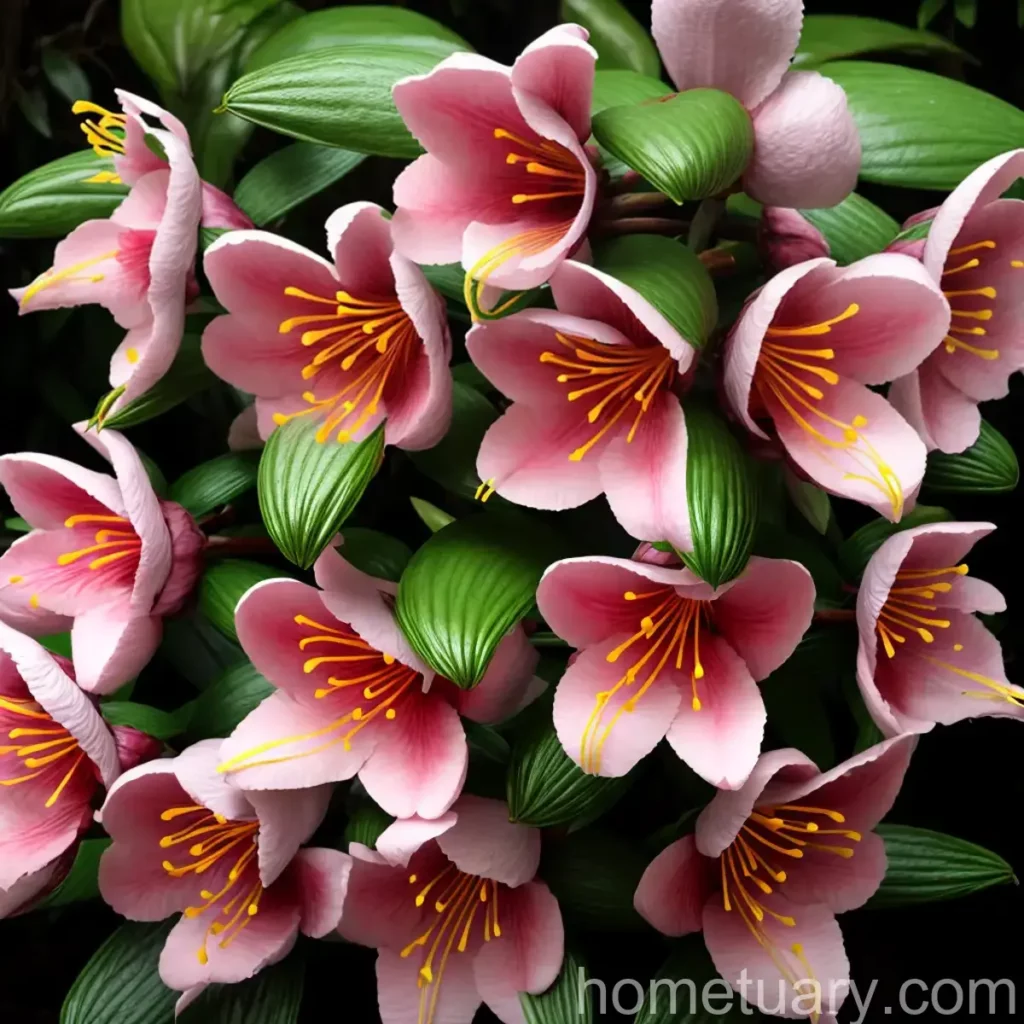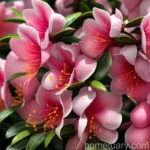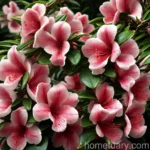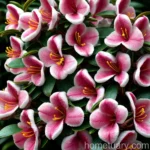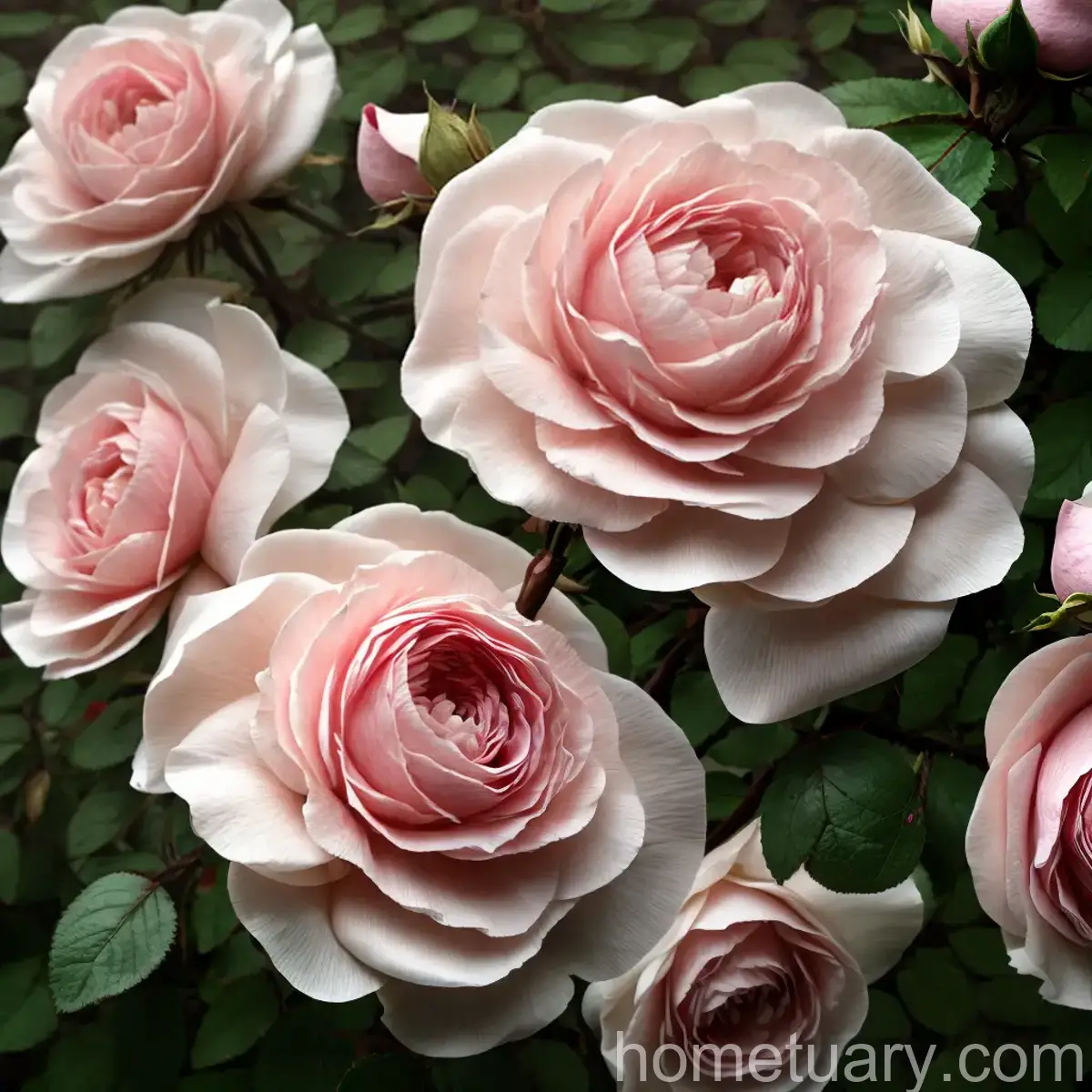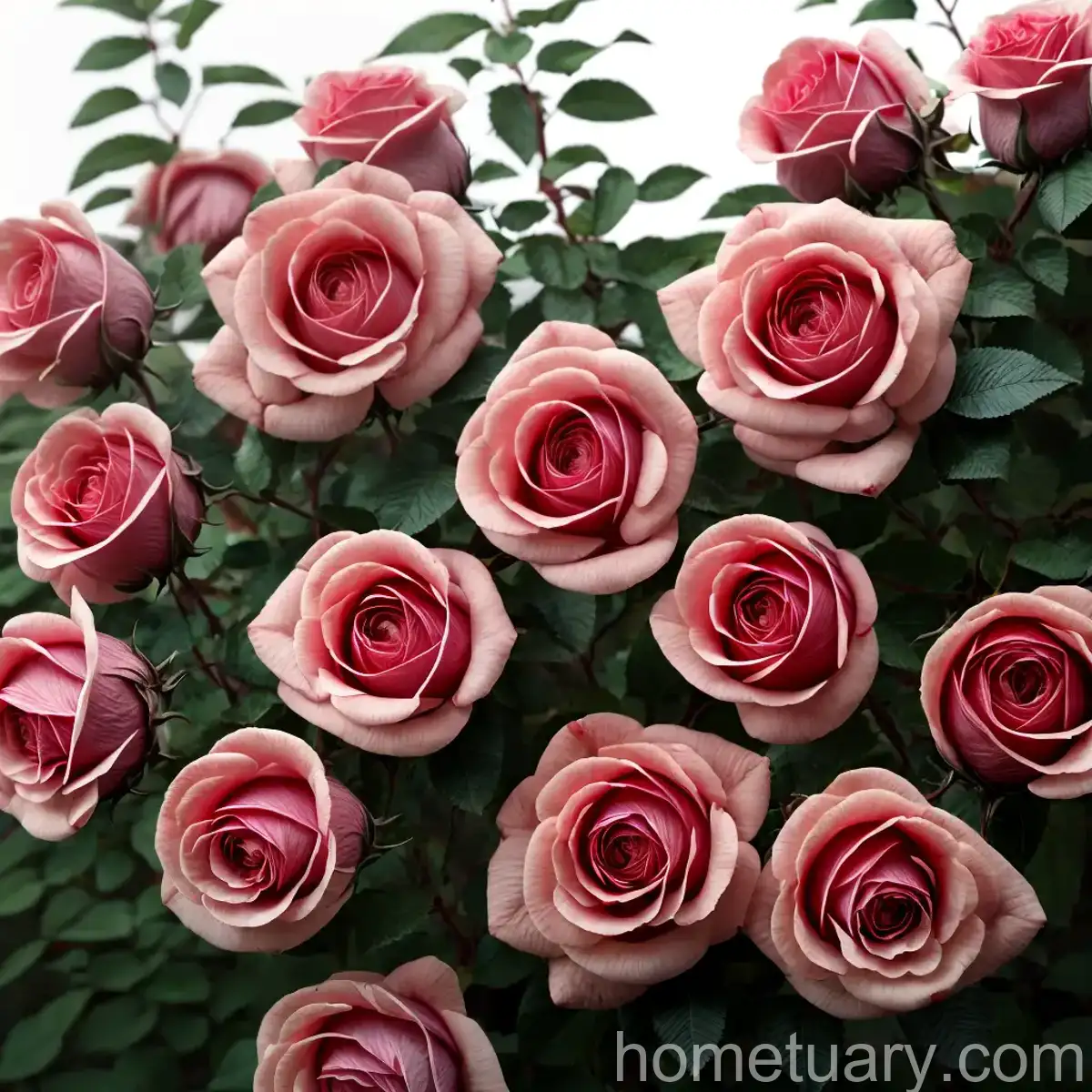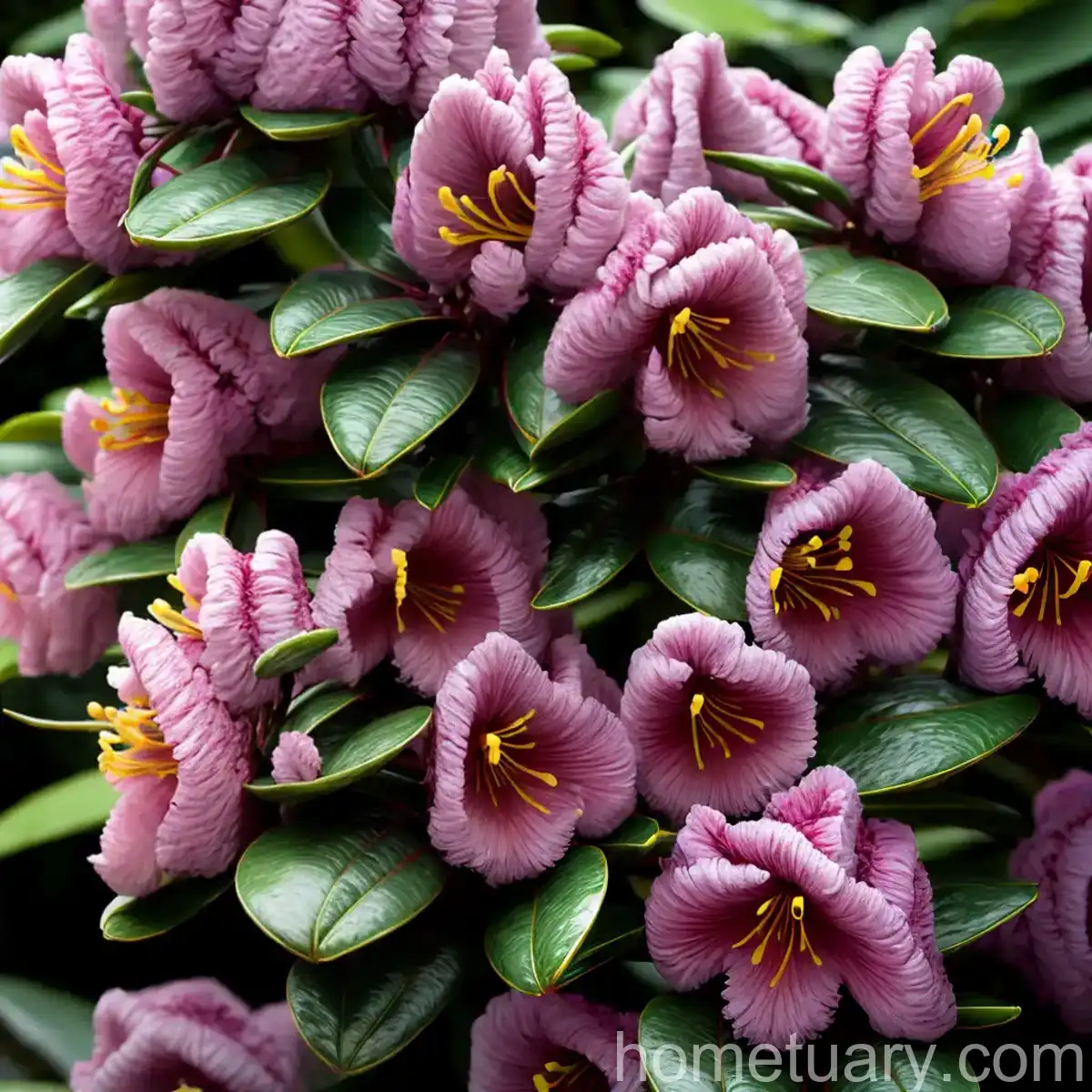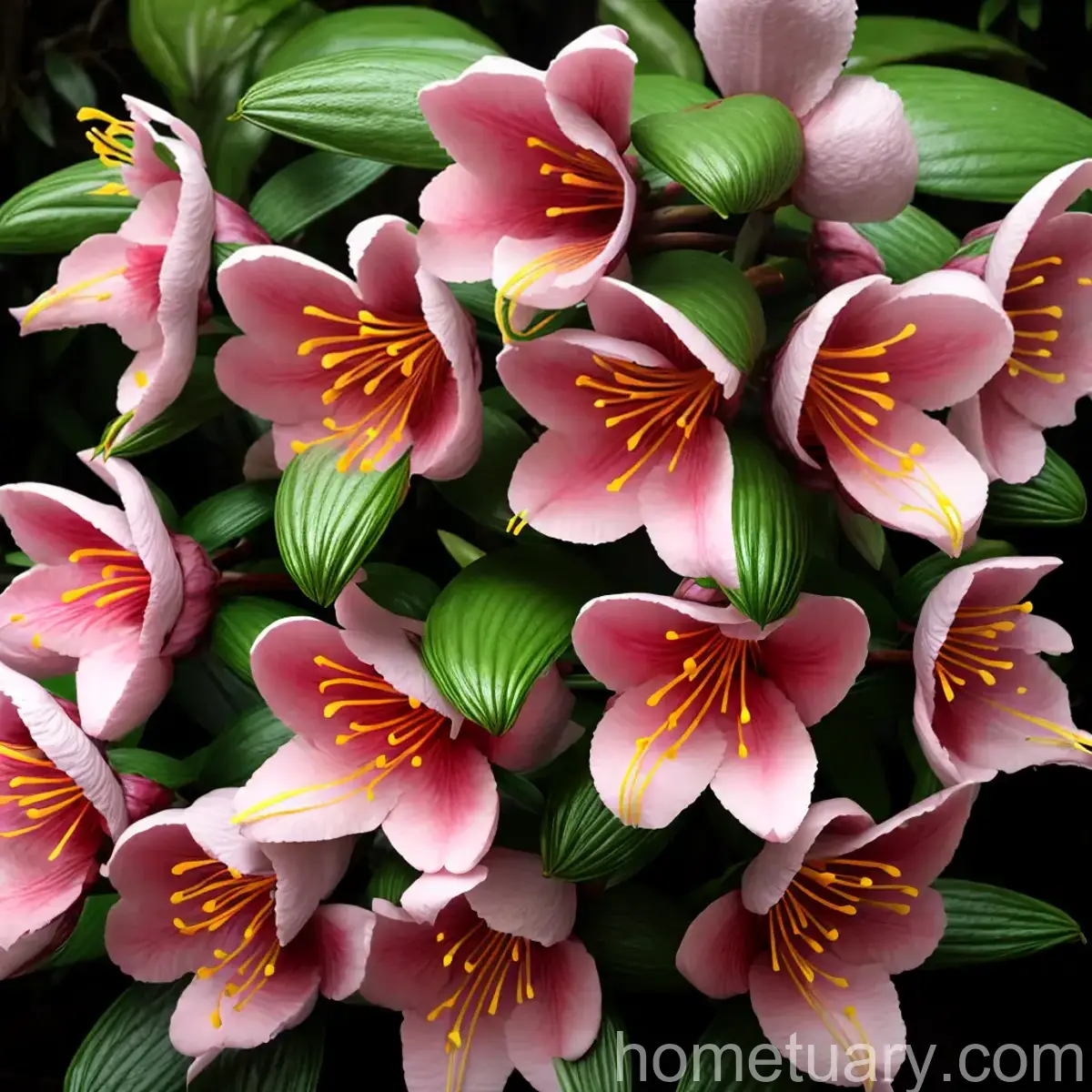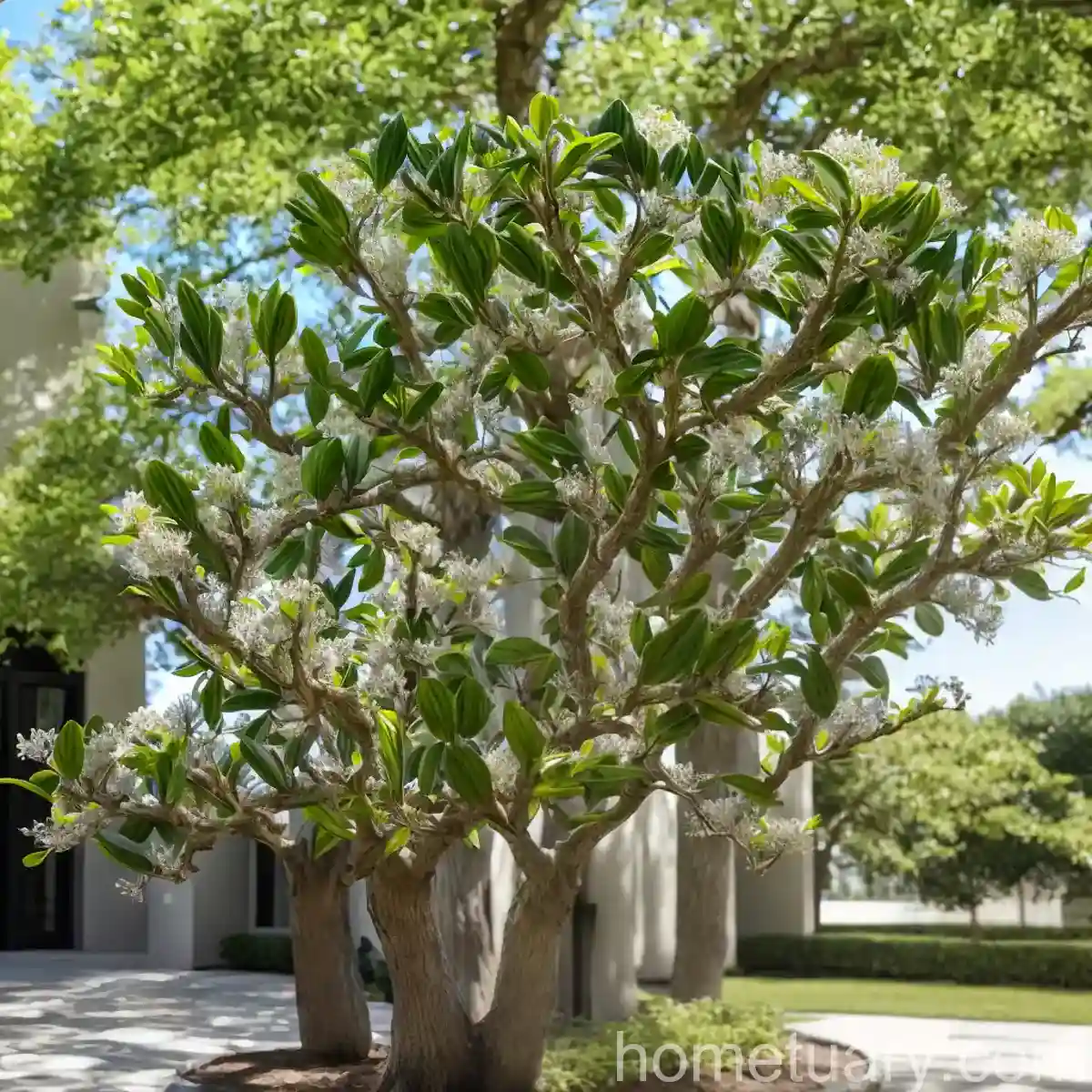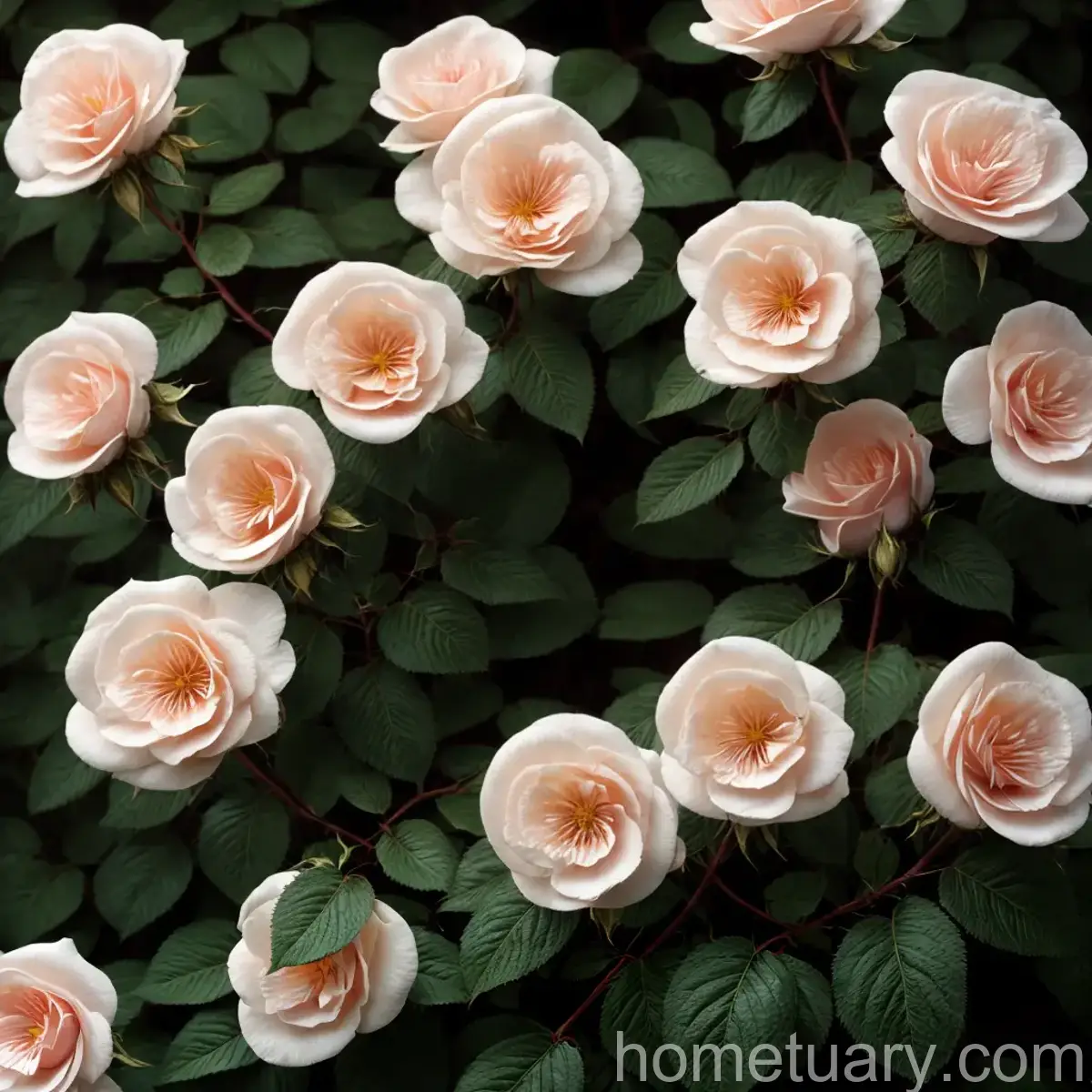Swamp Azalea (Rhododendron viscosum) – A Plant Scientist’s Comprehensive Guide
Introduction to Swamp Azalea (Rhododendron viscosum)
Swamp azalea, scientifically known as Rhododendron viscosum, is a charming and versatile deciduous shrub that belongs to the Ericaceae family. The plant is native to North America and is known for its beautiful, fragrant flowers. In this comprehensive guide, we will delve into the various aspects of caring for and cultivating swamp azalea, including its culture, uses, water and sunlight requirements, fertilizer needs, soil preferences, pruning techniques, propagation methods, common diseases and pests, and much more. Whether you are a seasoned gardener or someone new to planting, this guide will equip you with the knowledge to successfully grow and maintain this delightful plant in your garden.
What is Swamp Azalea (Rhododendron viscosum)?
Swamp azalea, also commonly referred to as clammy azalea or swamp honeysuckle, is a native North American shrub that can be found in a variety of habitats, including wetlands, swamps, bogs, and along stream banks. Its scientific name, Rhododendron viscosum, is derived from the Greek words “rhodos” meaning rose, and “dendron” meaning tree, which aptly describes its appealing rose-like flowers.
The species Rhododendron viscosum is well-regarded for its attractive, fragrant blooms that typically appear in late spring to early summer. These flowers come in various shades, including white, pink, and sometimes with a tinge of pale purple, adding a touch of elegance to any garden or landscape. As a deciduous shrub, swamp azalea sheds its leaves in the fall, providing seasonal interest with its vibrant foliage.
Apart from its ornamental value, swamp azalea also holds cultural significance and has been utilized for various traditional uses by indigenous communities. The plant has a rich history of being employed for its fragrance, medicinal properties, and as an ornamental component in landscapes.
In the following sections, we will explore in detail the essential aspects of swamp azalea care, cultivation, and maintenance, providing valuable insights into how to nurture this exquisite plant for optimal growth and enjoyment.
Key Takeaways – Swamp Azalea (Rhododendron viscosum)
Before delving into the specifics of swamp azalea care, let’s summarize some key takeaways about this captivating plant:
- Scientific Name: Rhododendron viscosum
- Common Names: Swamp Azalea, Clammy Azalea, Swamp Honeysuckle
- Family: Ericaceae
- Native Habitat: North America, particularly in wetlands, swamps, and along stream banks
- Flower Characteristics: Fragrant, with colors ranging from white to pink and pale purple
- Foliage: Deciduous, providing seasonal interest with vibrant fall colors
- Cultural Significance: Utilized for its fragrance, traditional uses, and ornamental value
- Blooming Season: Late spring to early summer
- Maintenance: Requires attention to water, sunlight, soil, and pruning for optimal growth
With these key takeaways in mind, let’s delve into the specific aspects of caring for swamp azalea and cultivating it to its full potential.
Culture
Cultivating swamp azalea successfully requires an understanding of its culture, including its preferred growing conditions, maintenance needs, and ways to optimize its health and beauty. Here are the essential cultural aspects to consider when nurturing this delightful shrub:
Uses
Swamp azalea offers a multitude of uses that make it a valuable addition to gardens and landscapes. Understanding its potential applications can aid in making the most of its ornamental and functional qualities. Here are the primary uses of swamp azalea:
- Ornamental Beauty: The plant’s fragrant, colorful flowers make it an ideal choice for ornamental purposes in gardens, parks, and natural landscapes.
- Wildlife Habitat: As a native plant, swamp azalea provides habitat and forage for various wildlife species, contributing to ecological diversity and balance.
- Fragrance: The flowers of Rhododendron viscosum emit a delightful fragrance, making it a desirable addition for sensory gardens or areas where fragrance is appreciated.
- Traditional and Medicinal Uses: Swamp azalea has a history of traditional uses, including herbal and medicinal applications by indigenous communities. Understanding its traditional significance can add cultural depth to its cultivation and use.
These diverse uses showcase the versatility and value of swamp azalea in both natural and cultivated environments.
Water
Proper watering is essential for the health and vitality of swamp azalea. As the name suggests, this plant thrives in moist or wet conditions, making it well-suited for cultivation in wetlands and similar environments. When growing swamp azalea in garden settings, it is crucial to replicate its natural moisture preferences. Here are some essential considerations regarding water needs for swamp azalea:
- Moisture Retention: Swamp azalea thrives in moist soil and benefits from consistent moisture levels, especially during the growing season. It is essential to ensure that the soil remains consistently moist, without becoming waterlogged.
- Natural Wetland Environments: In its native habitats, swamp azalea grows in wetlands and alongside bodies of water. Mimicking these natural conditions, especially in drier or warmer climates, can help maintain optimal moisture levels for the plant.
- Watering Frequency: Regular monitoring of soil moisture is crucial. Depending on the local climate and soil type, it may be necessary to water the plant regularly to keep the soil sufficiently moist, particularly during dry spells or in sandy soils that drain quickly.
By understanding and addressing the water needs of swamp azalea, gardeners can ensure that this plant thrives and produces its characteristic stunning blooms.
Sunlight
Sunlight plays a crucial role in the growth and blooming of swamp azalea. Understanding the plant’s sunlight requirements is essential for providing it with the necessary light exposure for healthy development and vibrant flowering. Here are the key points to consider regarding sunlight and swamp azalea:
- Partial Shade: Swamp azalea thrives in partial shade, making it well-suited for locations with dappled sunlight or areas that receive partial shade throughout the day.
- Morning Sun and Afternoon Shade: Providing morning sunlight and afternoon shade can create an ideal light environment for swamp azalea, ensuring it receives the necessary light without being exposed to harsh afternoon sun.
- Protection from Intense Sun: In regions with hot summers or intense sunlight, it is crucial to protect swamp azalea from prolonged exposure to direct sun, which can cause leaf scorch and affect overall plant health.
By selecting suitable locations and optimizing light exposure, gardeners can create ideal growing conditions for swamp azalea, promoting healthy growth and abundant flowering.
Fertilizer
Proper fertilization can significantly impact the growth, blooming, and overall health of swamp azalea. Understanding the plant’s nutrient requirements and applying appropriate fertilization practices can enhance its vigor and floral display. Here are the essential considerations when it comes to fertilizing swamp azalea:
- Acidic Soil Preferences: Like many members of the Rhododendron genus, swamp azalea thrives in acidic soil conditions. It is crucial to ensure that the soil pH is within the preferred acidic range to facilitate nutrient uptake and utilization.
- Slow-Release Fertilizers: Applying slow-release fertilizers specifically formulated for acid-loving plants can provide a consistent and balanced nutrient supply to swamp azalea over an extended period.
- Avoid Excessive Nitrogen: While nitrogen is a crucial nutrient for plant growth, excessive nitrogen can lead to lush foliage at the expense of flower production. Selecting fertilizers with a lower nitrogen content can help promote balanced growth and prolific flowering.
By addressing the plant’s soil acidity and selecting appropriate fertilizers, gardeners can provide swamp azalea with the essential nutrients it needs for robust growth and impressive floral displays.
Soil
The soil composition and quality significantly influence the health and resilience of swamp azalea. Understanding the plant’s soil preferences and optimizing the soil environment can create the ideal foundation for its growth. Here are the key considerations regarding soil and swamp azalea:
- Acidic Soil pH: Swamp azalea thrives in acidic soil with a pH range of approximately 4.5 to 5.5. Testing the soil pH and amending it with organic matter or acidifying agents can help achieve the preferred acidity levels for the plant.
- Ample Organic Matter: Incorporating organic matter, such as compost or well-rotted leaf mold, into the soil can improve its structure and fertility, providing an optimal environment for swamp azalea’s root development and nutrient uptake.
- Good Drainage: While swamp azalea prefers moist soil, it is crucial to ensure that the planting site has good drainage to prevent waterlogging, especially in areas with heavy clay soils. Amending the soil or selecting raised planting locations can help address drainage issues.
By addressing soil acidity, incorporating organic matter, and ensuring proper drainage, gardeners can create an optimal soil environment for the healthy growth and development of swamp azalea.
Pruning
Pruning is an essential aspect of maintaining the health, shape, and flowering capacity of swamp azalea. Proper pruning practices can ensure that the plant remains vigorous and produces an abundance of beautiful blooms. Here are the essential considerations for pruning swamp azalea:
- Pruning Timing: Prune swamp azalea after flowering, typically in late spring to early summer. This timing allows the plant to set buds for the following year’s blooms while still providing ample time for new growth to develop.
- Deadheading Spent Flowers: Removing faded flowers, a practice known as deadheading, can promote continued blooming and prevent seed formation, redirecting the plant’s energy into vegetative growth and flower production.
- Selective Pruning: Thinning out overcrowded or crossing branches can improve air circulation, light penetration, and overall plant health. It also helps maintain an open, well-structured growth habit for swamp azalea.
By adhering to appropriate pruning principles and timing, gardeners can help swamp azalea maintain its vigor, form, and flowering potential, ensuring a picturesque and thriving plant.
Propagation
Propagating swamp azalea can be an exciting and rewarding endeavor that allows gardeners to expand their plant collections and share the beauty of this species with others. Understanding the methods and best practices for propagation can facilitate successful reproduction of swamp azalea. Here are the primary propagation methods for this plant:
- Seed Propagation: While viable and rewarding, propagating swamp azalea from seeds can be a longer process, requiring patience and a favorable germination environment. Collecting seeds from mature seed capsules and sowing them under controlled conditions can yield new plants.
- Softwood Cuttings: Taking softwood cuttings from healthy, actively growing shoots during the spring or early summer can be an effective method of vegetative propagation. Rooting hormone application and proper care of the cuttings can enhance success rates.
- Layering: Air layering or ground layering can be employed to encourage the development of roots on a stem while it is still attached to the parent plant. Once roots have formed, the newly rooted section can be separated and potted as an independent plant.
By exploring and applying these propagation methods, gardeners can propagate swamp azalea to expand their gardens or share the plant’s beauty with others, contributing to its conservation and appreciation.
Container Popularity
Swamp azalea’s adaptability to container cultivation makes it a popular choice for adding beauty and fragrance to patios, balconies, and small gardens. Its ornamental value, compact size, and vibrant blooms contribute to its popularity as a container plant. Here are some factors contributing to its container popularity:
- Space Efficiency: Swamp azalea can thrive and bloom profusely in containers, making it an excellent choice for limited garden spaces or urban environments.
- Fragrant Display: The presence of fragrant flowers in a container setting can enhance outdoor living spaces, allowing individuals to enjoy the captivating fragrance of swamp azalea up close.
- Seasonal Portability: Containers provide the flexibility to move swamp azalea to optimal light and moisture conditions throughout the year, ensuring its health and vitality.
By cultivating swamp azalea in containers, individuals can enjoy its beauty and fragrance in diverse settings, adding a touch of charm to their outdoor living spaces.
Common Diseases
Swamp azalea, like many ornamental plants, may be susceptible to certain diseases that can affect its health and appearance. Understanding these common diseases and being vigilant about preventative measures can help maintain the plant’s vitality. Here are some of the prevalent diseases that can impact swamp azalea:
Disease Diagnosis
- Powdery Mildew (Erysiphe spp.): Powdery mildew can manifest as a white, powdery growth on the foliage, affecting the plant’s overall appearance and vigor. It is crucial to monitor the plant for signs of powdery mildew and address any predisposing factors, such as poor air circulation or high humidity.
- Leaf Spot (Cercospora spp.): Leaf spot diseases can cause circular lesions or spots on the foliage, leading to leaf discoloration and potential defoliation. Proper plant hygiene, including removing and disposing of infected leaves, can help manage leaf spot diseases.
- Root Rot (Phytophthora spp.): Excessive soil moisture or poor drainage can contribute to the development of root rot, which can cause the plant to exhibit symptoms of wilting, leaf yellowing, and overall decline. Establishing proper soil drainage and avoiding overwatering can help prevent root rot.
By closely monitoring swamp azalea for symptoms of common diseases, gardeners can take timely action to manage and prevent the spread of these potentially detrimental conditions.
Common Pests
In addition to diseases, swamp azalea may be susceptible to various pests that can impact its health and appearance. Identifying common pests and implementing pest management strategies is crucial for safeguarding the plant against potential infestations. Here are some of the primary pests that may affect swamp azalea:
- Aphids: These small, sap-sucking insects can cluster on the undersides of leaves and cause leaf distortion and stunted growth. Insecticidal soaps or horticultural oils can be used to control aphid populations.
- Scale Insects: Scale insects can appear as small, immobile bumps on stems and leaves, sapping the plant’s nutrients and weakening it. Pruning and applying insecticidal treatments can help manage scale infestations.
- Spider Mites: These tiny arachnids can cause webbing on the foliage and stippling, resulting in reduced plant vigor. Regularly spraying plants with water and applying miticides can aid in spider mite control.
Vigilance, early detection, and prompt intervention are essential for mitigating the impact of pest infestations on swamp azalea, ensuring its continued health and vitality.
Botanist’s Tips
Gleaned from years of observation, research, and hands-on experience, the following botanist’s tips offer valuable insights and practical advice for successfully caring for and cultivating swamp azalea:
- Mulching: Applying a layer of organic mulch, such as pine bark or leaf mulch, around swamp azalea can help conserve soil moisture, regulate temperature, and provide a gradual release of nutrients as the mulch breaks down.
- Companion Planting: Pairing swamp azalea with other acid-loving plants, such as ferns, heathers, or other rhododendron species, can create visually appealing and ecologically beneficial garden compositions.
These tips provide actionable guidance for nurturing swamp azalea and creating thriving, harmonious plantings.
Fun Facts
Swamp azalea, also known as clammy azalea, possesses intriguing traits and characteristics that contribute to its allure and appeal:
- Fragrant Nectar: The flowers of swamp azalea exude a delightful fragrance, attracting pollinators and delighting human observers alike.
- Native Habitat: In its native wetland habitats, swamp azalea contributes to the biodiversity and ecological integrity of these crucial ecosystems.
- Seasonal Transformation: From its vibrant spring blooms to its colorful fall foliage, swamp azalea offers dynamic seasonal interest throughout the year.
These captivating facts highlight the charm and significance of swamp azalea within the natural world, as well as its potential as an ornamental garden plant.
Links to External Resources
For further information on swamp azalea and related topics, the following external resources can provide valuable insights, tips, and inspiration:
- The American Rhododendron Society
- The Rhododendron Species Foundation & Botanical Garden
- North Carolina Native Plant Society – Swamp Azalea
- University of Florida IFAS Extension – Azaleas and Rhododendrons
These external resources offer a wealth of information, expertise, and visual references to enrich and expand your understanding of swamp azalea and related botanical subjects.
In conclusion, swamp azalea (Rhododendron viscosum) stands as a captivating and adaptable plant with distinctive ornamental, ecological, and cultural value. By embracing the insights and recommendations provided in this comprehensive guide, you can cultivate and enjoy the beauty of swamp azalea in your own garden or landscape, creating a vibrant and harmonious natural setting that celebrates the enchanting qualities of this splendid native shrub.
Remember, successful cultivation of swamp azalea requires thoughtful attention to its moisture, light, soil, and maintenance needs, ensuring that this plant thrives and flourishes in its chosen environment. With its fragrant blooms, vibrant foliage, and ecological contributions, swamp azalea remains a cherished and cherished addition to diverse landscapes, offering an enduring connection to the natural world and its many wonders.
Now that you’ve delved deep into the world of swamp azalea, don’t hesitate to share your newfound knowledge and passion with fellow enthusiasts, aspiring gardeners, and nature lovers. Whether it’s in your own garden or in community spaces, the beauty and significance of swamp azalea can be celebrated and preserved for generations to come.
Happy gardening, and may the allure of swamp azalea continue to inspire and enchant all who encounter its splendor!

